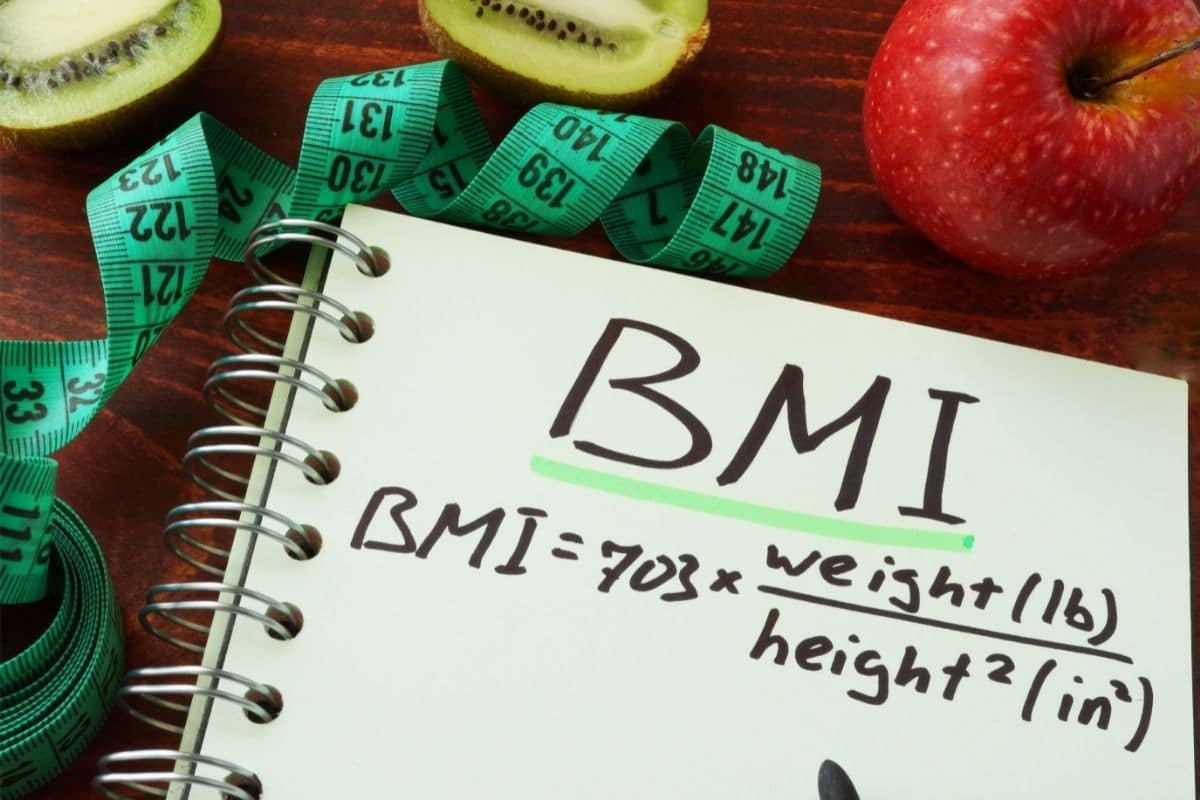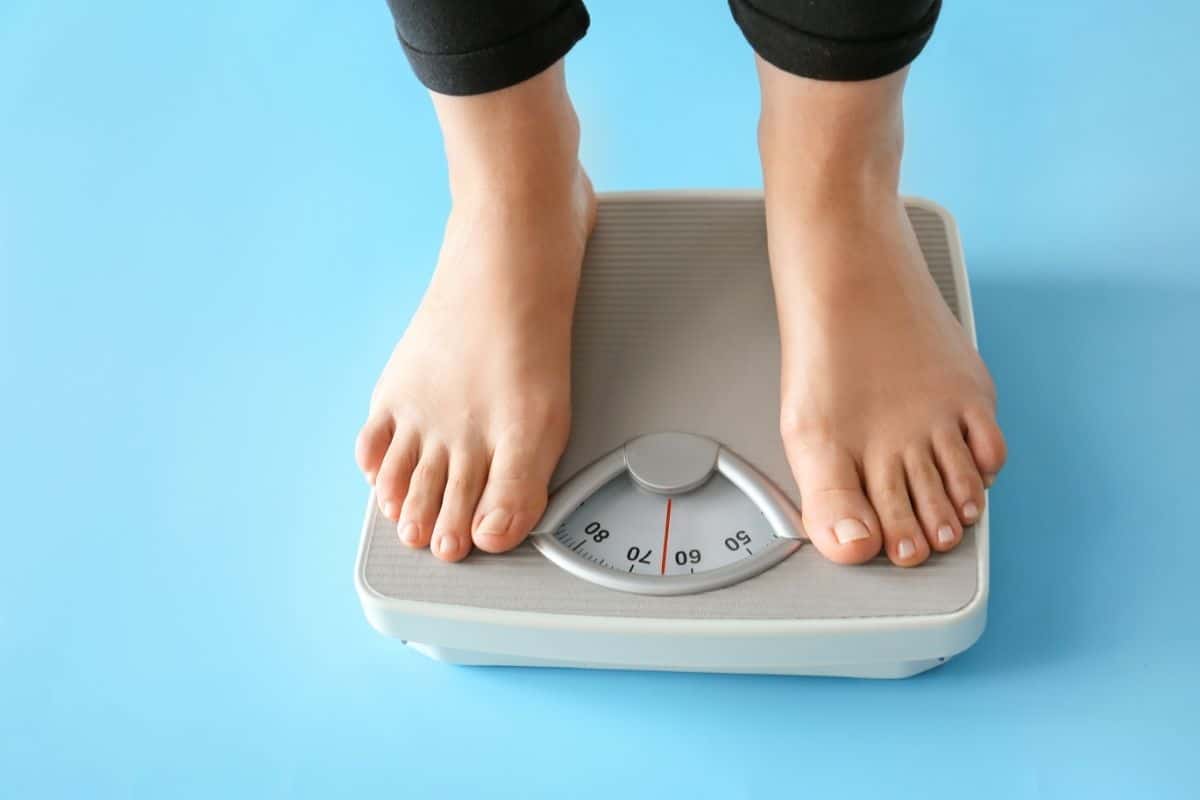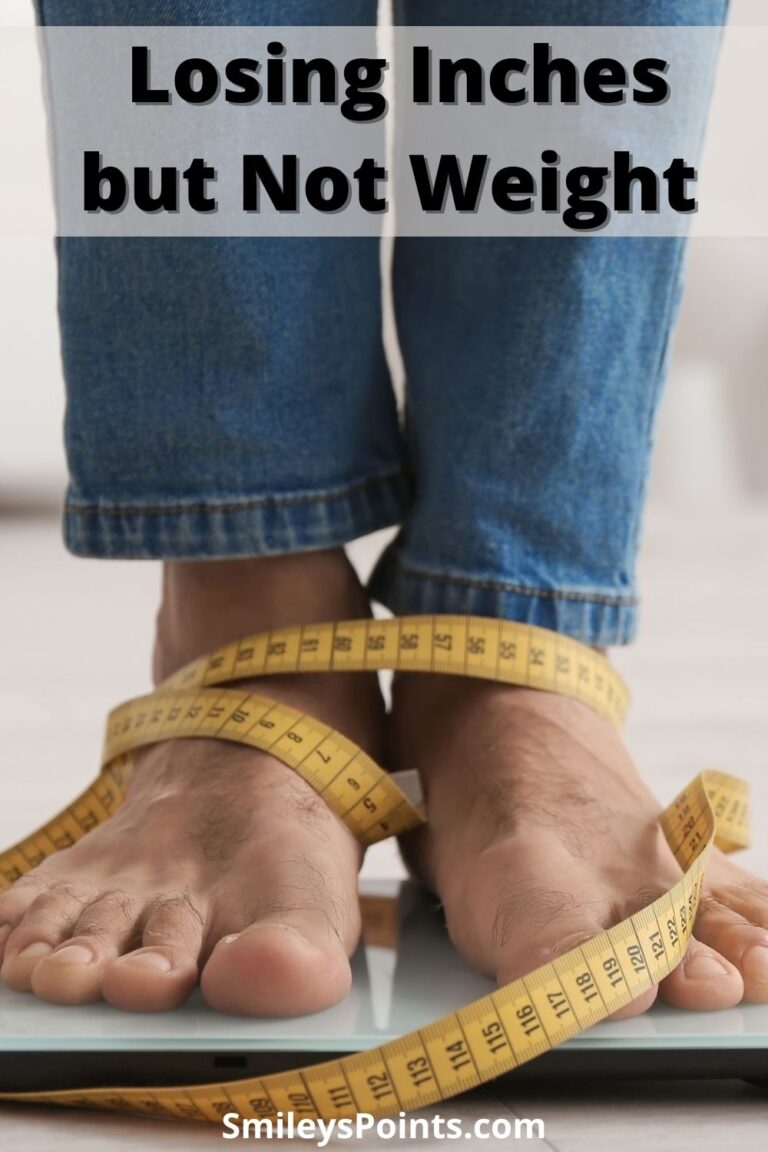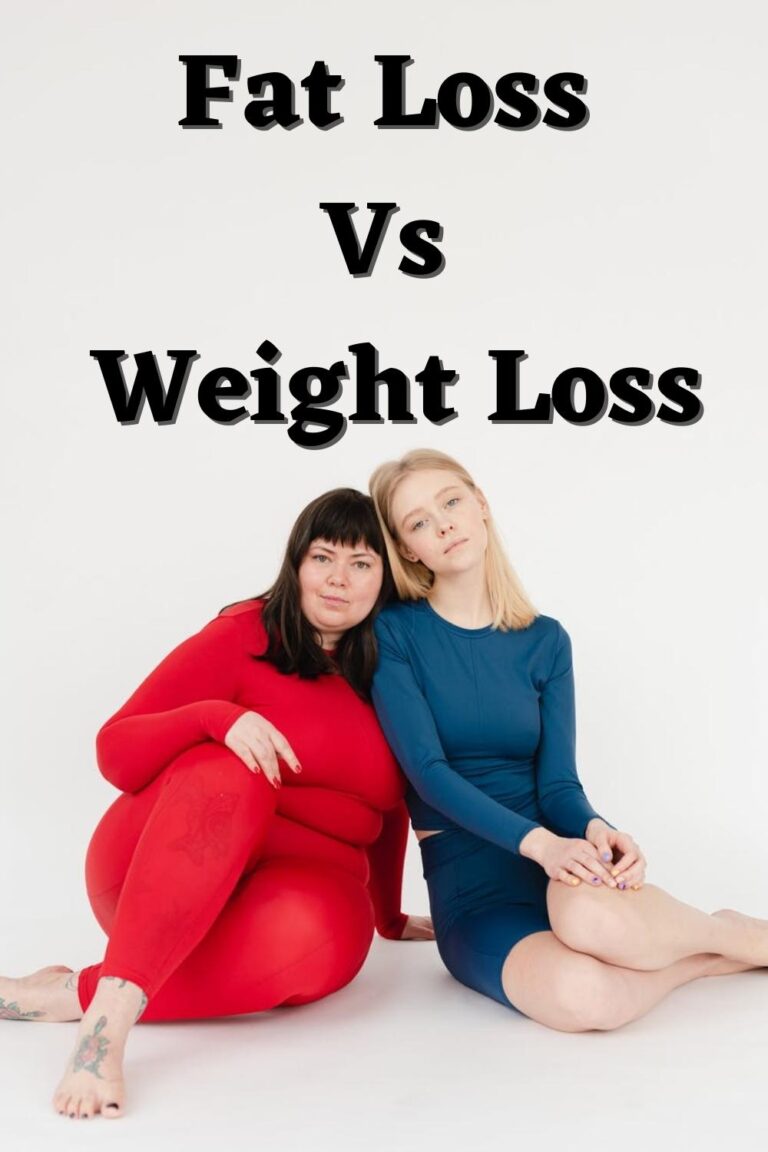How Metabolism Influences Your Weight Loss Journey and What You Can Do About It!
Metabolism and weight loss go hand in hand. Losing weight is not necessarily a result of simply restricting caloric intake. Many factors play into becoming healthy, from proper diet and exercise to body type to age. When you consider all of these factors, you are more likely to have success on your weight loss journey.
What is the Metabolic Confusion Meal Plan and Does it Work?
This diet operates on the premise that once the metabolism works harder, you lose weight faster. Metabolism is your body’s process of converting food into energy. It varies according to individuals and operates at different speeds. Metabolism changes (tends to slow) as we age and decreases with sedentary lifestyles due to inactivity.
Some people have a quick metabolism that allows them to consume more calories and burn them quicker. Others don’t burn calories as fast.
For these people, the balance between calorie restriction and changing food choices and activity levels becomes a mindful battle that they are conscious of every day of their lives. If it doesn’t remain at the forefront of their minds, it becomes easy to regain the weight that they struggled so hard to lose.
The benefit of the metabolic confusion diet is that calorie shifting works quickly. It recharges the metabolic rate using a mixed calorie plan. The question is how does something so simple work and is it safe?
The Science Behind Metabolic Confusion
A metabolic confusion meal plan works by actively confusing your metabolism by creating a diet that mixes low- and high-calorie meals. Constantly decreasing and increasing calories is supposed to increase the metabolic rate.
The premise is that if you vary calorie consumption, which causes calorie confusion, the basal metabolic rate (the number of calories burned while at rest) increases. Once the metabolism works harder, it increases the calories burned and burns body fat.
The slower the metabolism, the fewer calories you need when you diet. The goal is to consume less than what you burn, which causes weight loss. By increasing your metabolism, you can eat more calories without weight gain.
Metabolic confusion tricks the body into not decreasing the metabolism by lowering and increasing your food intake.
How Does A Metabolic Confusion Diet Work?
Like an intermittent fasting eating plan, on this diet plan, there are days when you eat fewer calories mixed with days of higher consumption. The days with higher consumption will meet the guidelines for average daily calorie intake.
Here are the general guidelines for women:
- Women between the ages of 19-30 need 2,000-2,400 calories daily for weight maintenance.
- Between the ages of 31-59, women have lower energy needs. They should consume 1,800-2,200 calories daily to maintain weight.
- Over 60 requires daily consumption of 1,600-2,000 calories per day.
These are just general guidelines for women. There will be variations according to height, current weight, and activity level. Also, pregnant and breastfeeding women will need to consume more calories to remain healthy.
For men, the guidelines are:
- 2,400-3,000 calories daily to maintain weight between ages 19-30.
- From 31-59, daily calorie intake should be 2,200-3,000.
- Over 60, calories consumed should be 2,000-2,600 calories.
On average, the metabolic confusion diet on a high-calorie day tends to be 2,500 daily calories for men and 2,000 calories for women. Metabolic confusion permits more calories over the Fast 800 diet or the 5:2 plan, even on a low-calorie day.
A metabolic confusion diet permits 1200 calories on low days compared to the 5:2 plan’s 500 calories. Furthermore, there are no restrictions on when to implement a low-calorie day or on the time to eat. Some people will alternate days, while others choose to alternate weeks. It is whatever fits your lifestyle. No matter what you implement, the results should be the same.
Is it Safe and Are People Successful?
Presently, there is not enough evidence available to support whether this diet works to boost metabolism. The only thing experts concur on is the merits and longevity of the lifestyle change.
Since it is easier to follow, more people stick to it. If you are hungry and go over one day, you know that you can recuperate it the next. So, it eliminates the feeling of failure that most people feel while trying to lose weight. Also, by allowing yourself indulgence days, people tend to want to stick with it over the long-term over a constant calorie-restricted diet.
Additionally, the diet itself doesn’t have any dietary restrictions. You can eat what you want if you stay within the specified number of calories.
However, in terms of calories, the typically recommended diet tends to be 11 days of low calories accompanied by three days of consuming high calories. This pattern forces the body into weight-loss plateaus. It resets the metabolism by micronutrient and calorie cycling.
The downside may be the temptation to go over and justify that you will modify what you eat tomorrow. If you have good self-control, this can work. However, a lot of us continually put off adjusting our calorie intake to tomorrow and end up putting on weight. To be successful on this diet, you must be committed to sticking with it.
In the metabolic confusion diet, exercise is encouraged. Exercising on low-calorie days lets the body burn consumed calories, creating a calorie deficit and leading to quicker weight loss. Consult your doctor before engaging in this diet so he or she can help you come up with a safe plan to follow.
It is also important to gauge your metabolic age as it measures your fitness and overall health as a baseline.
What is Metabolic Age and What Does it Say About Your Overall Health?
Metabolic age is a measurement of the basal metabolic rate (BMR). It tells you how many calories the body consumes at rest and compares it to the average BMR of individuals in your age group in the general population.
Basal metabolic rate measures overall fitness and health. However, as with the body mass index (BMI), this method has detractors. Neither method measures body composition adequately.
An example would be a bodybuilder who would have an abundance of lean muscle mass. They may end up with the same BMR and BMI as another individual that does not have the same body fat percentage and muscle mass.
Another factor is that there aren’t an adequate number of peer-reviewed studies. Medical communities don’t reference metabolic age as it isn’t a good indicator for how people compare across similar age groups. It doesn’t provide a good health marker.
Further Understanding of BMR
BMR is the lowest number of calories required for your body to function while resting. It includes calories burned while sedentary. Even while you are not active, your body burns calories. Activities like digesting, breathing, and circulating blood burn calories at rest.
BMR does not consider any physical activity, which is important because 60-75 percent of calories burned daily occur while doing nothing. In estimating your BMR, factor in gender, weight (kilograms), height (centimeters), and age. You can plug these numbers into the Harris-Benedict metabolic age calculator or use this formula:
Men: 66.5 + (13.75 x weight) + (5.003 x height) – (6.775 x age)
Women: 655.1 + (9.563 x weight) + (1.850 x height) – (4.676 x age)
This formula is also referenced as resting metabolic rate (RMR).
However, a 2015 review measuring RMR discovered there isn’t a single RMR value appropriate for every adult. Estimates are complicated by characteristics in demographics and body proportion. Instead, resting energy expenditure (REE) provides a more accurate picture of calories burned at rest.
Calculating REE involves fasting from food and measurement using indirect calorimetry. Patients lie under a transparent dome while technicians monitor REE. REE and BMR have different calculations, but the difference is less than 10%, so people use them interchangeably.
Calculating Actual Metabolic Age
Estimating BMR is easier than calculating metabolic age. You obtain your metabolic age before a fasting period, and special software considers waist circumference, body composition, and blood pressure while resting. A five-day diet analysis is also required. The calculation involves subtracting chronological age from your metabolic age.
If you want to calculate your actual metabolic age, you need data on people your exact age. Discuss this with your dietician, trainer, or doctor to find out what this number is.
Does Metabolic Age Differ or Is it Similar to Chronological Age?
Chronological age involves how many (calendar) years you have been alive. It helps gauge how you rank compared to others in your age group. On the other hand, metabolic age is BMR compared to other people of the same age.
If metabolic age equals your actual age, you are just like others in your age group. If you have a lower metabolic age, it means your metabolism works faster than the average. A higher metabolic age indicates that your body does not burn calories as quickly as other people your age.
A higher BMR means you need to burn more daily calories to be healthy and maintain a healthy weight. Lower BMR, as mentioned, indicates a slower metabolism and a need for fewer calories. The importance of these figures is to incorporate a lifestyle that involves healthy eating and exercise.
BMI vs BMR – How to Achieve Your Ideal Weight
As for how BMI correlates to BMR, both are effective ways of measuring weight and body mass. People wanting to lose weight use both methods; however, they are very different methods.
Body mass index (BMI) uses body mass and measures body composition based on weight and height. It is based on statistical measurements. Meanwhile, BMR is more of a biological yet natural process indicating the number of calories the body burns at rest. BMR measures how much energy is needed for organs and parts of the body to function properly.
BMI looks at your current weight and height to understand your build. It indicates whether you are underweight, normal, overweight, or obese within an established range. There are standard calculations for BMI, and you can easily find an online BMI calculator that considers gender, diet, and descent to understand your body composition.

BMR, as we have already discussed, functions similarly to BMI. The difference is that BMR indicates, on average, how many calories your body burns naturally. BMR charts also take age into consideration.
How Do the Two Methods Compare?
Body Mass Index:
- Provides a standard measurement since it is calculated statistically
- Charts provide a basic range
- Ranges for women differ from men as women’s bodies contain more fat (should be noted that lifestyle and age if sedentary may show a normal range even if the person is overweight)
- Calculators are limited methods of measurement as it doesn’t consider non-standardized exceptions (i.e. bodybuilders whose weight may be higher due to muscle mass)
- Doesn’t consider age or physiological factors
Basal Metabolic Rate:
- BMR is calculated by weight, height, and age
- Examines what the body requires to remain stable in terms of calories
- It is different between genders and is generated differently
- Provides a personalized measurement
- Depends on natural and physiological body mechanisms
- Somewhat reliant on genetics
As a tool, BMR can be used to calculate the minimum number of calories needed per day to keep the body healthy. This number of calories is what you do not want to be under to remain healthy and not cause damage to your body. From this, you will want to figure out how much exercise to incorporate and how much food intake you require for your age.
It is great to know the minimum number of calories to consume. However, to avoid starvation, you also want to ensure that you burn more calories than you consume while maintaining a healthy, balanced diet. Remember, BMR only considers the minimum number of calories needed at rest. It doesn’t factor in exercise.
BMI is useful in determining where you are presently and providing a target where you should be. It can be a helpful tool for weight loss. But don’t let it discourage you. Remember it is a general guideline, and it doesn’t consider your body shape, bone structure, or muscle mass.
BMI provides ranges for a reason. People who lose weight and exercise may be lean yet register high on the BMI scale. The reason is that muscle weighs more than fat. Furthermore, the ideal weight outlined on the BMI scale may be less than what you should be for your frame.
If you have a large frame, an ideal weight may be higher on the BMI. If you are petite, you may need to be lower. Use it as a guideline – not gospel – when determining proper weight. Aim to lose what is healthy for your body type and the range in which you feel good about yourself. This is where consulting with a doctor becomes a wise choice.
Using These Two Instruments, How Do You Lose Weight Effectively?
Exercise and diet play a large role in maintaining health. To avoid weight gain, you will need to burn more calories than are consumed. To improve the metabolic age, you will need to:
- Increase exercise or physical activity
- Reduce portion sizes
- Consult a dietician/nutritionist
- Drink water and avoid a lot of sugary or caffeinated drinks
- Choose lean proteins
- Consume whole carbs and reduce/eliminate refined ones
Many people try to reduce calories without exercising, and you can lose some weight by doing this. However, when you greatly reduce calorie intake, your body goes into starvation mode and lowers its metabolic rate. Since your body is now burning calories more slowly, the weight you’ve lost may come creeping back and you’ll have to work harder to maintain your current weight.
If you choose not to decrease caloric intake but only increase physical activity, you will likely still lose weight. However, the weight loss may be slower, and you will need to exercise more to burn the extra calories you are consuming. You may find you need to walk, or even run, five miles daily just to burn one pound of fat.
Reducing calories while also increasing activity is the best way to avoid the slow down in metabolism that can hinder weight loss. Regular exercise doesn’t just burn calories while you’re active but it also improves BMR. This allows you to burn more calories, even while at rest.
Here are some simple and practical tips to safely increase physical activity levels:
- Begin each day with stretches
- Reduce sitting time – be intentional about moving around during the day
- Get in the habit of taking the stairs rather than using elevators and escalators
- Park further away from store entrances so you have to walk more to get there
- Take a brief, brisk walk before dinner
- Walk two miles or bike three times a week
- Join an exercise/dance/spin class or any other activity you will enjoy
- Work with a personal trainer
- Incorporate high-intensity training (HIT) – intense activity bursts followed by a short rest
High-intensity training can improve metabolism even after you have stopped exercising. This means you can spend less time training. For certain health conditions, check with your doctor before engaging in this type of physical activity.
Research also indicates sleep plays a vital role in metabolism. A lack of sleep can cause weight gain. If getting a good night’s sleep is an issue, try implementing stretching exercises before heading off to bed.
If metabolism is an issue for you, as it is for many people, don’t lose hope. You are not doomed to a life of failure in the weight loss arena. You can reset your metabolism with the steps we’ve mentioned to help you speed up your metabolism and lose the weight.
However, we all know that weight loss isn’t always as simple as it sounds. There are some common mistakes a lot of people make and that you should avoid.
How to Reset Metabolism for Weight Loss – 6 Mistakes to Avoid
We cannot stress enough how important it is to keep a high metabolism through exercise and diet to help keep weight off. You may not really enjoy exercising, but it is a necessary lifestyle change for maintaining good health.
Yet we all inadvertently make mistakes that slow down our metabolism, even when we’re actively trying to lose weight. If these mistakes become routine, they can make it challenging to lose weight and increase the chances of gaining it back.
- Not Consuming Adequate Protein. Protein is crucial to maintaining and achieving a healthy body weight. It allows you to feel fuller and can increase the rate at which the body burns calories. This increase happens after food is digested and is known as the thermic effect of food (TEF). The TEF of protein is higher than that of fat or carbs. Eating protein will temporarily increase metabolism by 20-30%. Carbs increase it by 5-10% and fat by less than 3%. In short, consuming protein preserves metabolic rate while losing weight.
- Consuming Fewer Calories Than Your Body Needs. An extreme calorie restriction is counterproductive to losing weight. When you severely restrict caloric intake, your body immediately thinks that food is not readily available. It lowers the rate of burning calories and goes into starvation mode so it can survive. By doing this, it protects vital organs from harm. Controlled studies comparing overweight and lean individuals confirm eating less than 1,000 calories a day impairs your metabolic rate. Even after increasing calories over the next five weeks, resting metabolic rates remained lower than before the diet. Even a moderate lowering of calories beyond a certain point slows metabolism. When trying to lose weight, it is wise to avoid restricting calories too drastically and for too long.
- Being Inactive. A sedentary lifestyle reduces the number of calories your body burns daily. People with desk jobs or who sit for long periods of time can actually harm their health. Working out, playing sports, going for walks, standing, taking the stairs, or simply doing housework all count as exercise. They all contribute to a healthy metabolism because you’re moving and being active.
- Not Getting Enough Sleep. In addition to affecting your energy, sleeping fewer hours increases the risk of illness because it suppresses your immune system. The body heals itself while at rest. If it doesn’t receive enough sleep, illnesses like diabetes, depression, and heart disease can become factors. Studies note that poor sleep contributes to slower metabolic rates and increased weight gain. Healthy adults that slept under four hours each night for five consecutive nights had a 2.6% decrease in resting metabolism. Rates returned to normal after twelve hours of solid sleep. Furthermore, the effects of not getting enough sleep are made worse by sleeping during the day because that disrupts your body’s natural circadian rhythm.
- Consuming Sugary Drinks. It may seem obvious, but drinks with sugar are just plain not good for you. Consuming too much leads to diabetes, obesity, and insulin resistance. A lot of these issues are attributed to the high levels of fructose that are present. Consuming too many high-sugar beverages can slow metabolism and lead to increased fat in the liver and stomach.
- Neglecting Strength Training. Most people concentrate too heavily on cardiovascular activities as they burn more calories in less time. They completely forget the importance of strength training when it comes to achieving a healthy body weight. Strength training increases metabolic rates even for people who are obese/overweight or who have heart disease. Muscle mass comprises most of the fat-free mass in the body and increasing it boosts the number of calories burned while resting. Not engaging in strength training can cause your metabolism to slow, especially for older people or those dieting to lose weight.
By falling prey to some of these mistakes, people can, perhaps unknowingly, decrease their metabolism. This can result in frustration at their lack of progress or the tendency to gain the weight back quickly. By making a few key changes, weight management becomes easier.
There is one inevitable factor that slows down metabolism: aging. Since we cannot stop time, we should strive to incorporate new habits as we age to maintain a healthy weight.
How to Speed Up Metabolism After 50 – Healthy Weight Loss Tips
Everyone’s metabolic rate will be different. Some individuals have a high metabolism, others are normal, and some have a slower metabolic rate. Sometimes age is the greatest equalizer for how fast the body burns calories. Simply put, as we age, our metabolism decreases and it can be harder to lose weight because the body burns fewer calories.
Due to hormonal shifts, the body stores increased amounts of fat and loses muscle. This change becomes more evident after the age of 50. While most people think they are doomed to gain weight because of age, this simply isn’t the case. There are many ways to boost your fat metabolism and lose weight even after 50!
1. Do Aerobics. Cardio and aerobic exercises have benefits like maintaining healthy blood pressure, lowering resting heart rate, keeping lungs healthy, controlling blood sugar, losing weight, and lowering the risk of heart disease.
Examples of aerobic activities are walking, cycling, swimming (great for low impact!), dancing, jogging, or playing tennis.
2. Increase Muscle Mass. We lose 3-8% of muscle mass after age 30. Sarcopenia (loss of muscle) increases once a person turns 50. On average, people lose 15% of muscle mass with each successive decade. This all happens around the same time that metabolism decreases.
Protein, metabolism, and muscle mass are all connected. When muscle mass decreases, metabolism soon follows.
To avoid this, engage in strength training/weightlifting to burn calories and build muscle.
3. Stay Hydrated. Drinking enough water helps metabolism. While drinking water, the body engages in thermogenesis (the body heats itself) to process the fluid and warm it to body temperature. This same process helps the body metabolize food.
By using energy to generate heat, the body burns calories, boosting metabolism by 30%. Since this energy expenditure only lasts for one hour, it happens every time we consume water. Water also helps while exercising and allows the body to dissolve vitamins and nutrients into the bloodstream.
4. Have Frequent Small Meals. Smaller, more frequent meals are wonderful at preventing drops in metabolism. The longer you go between meals, the more metabolism drops due to hunger. If you consume smaller, more balanced meals at frequent intervals, or even just add a healthy snack into your day, metabolism remains at a consistent rate.
5. Develop Healthy Eating Habits. Add more protein to your daily meals. Mature adults need more protein to combat muscle loss as they age and maintain proper body function. Older adults require 1.0 – 1.5 grams of protein per kilogram of their body weight.
In addition to protein, you will need to consume more fruits, vegetables, whole grains, healthy fat, and fiber. Whole foods deliver more nutritional value because, as it ages, the body absorbs nutrients less efficiently. Also, nutrient-dense food allows you to feel fuller longer.
6. Get Enough Sleep. Sleep often becomes more of an issue as we age. People become more alert and active in the mornings and more tired at night. Good sleep is important in boosting immunity and staying healthy as we age. Sleep allows the body to burn more calories and efficiently use nutrients.
If you have trouble sleeping, here are some tips that can help prepare you to get a good night’s sleep and boost your energy levels throughout the day:
- Increase outdoor activity
- Exercise daily
- Avoid evening or late afternoon naps
- Do not eat or drink late at night
- Lower the temperature in your home
- Keep the room dark
- Avoid noise from music or television sets
These simple techniques help you stay healthy as you age. All it takes is keeping an active lifestyle and a well-balanced diet. If you need a little extra help, programs like Noom and Healthi can help you understand the psychology of weight loss, what factors are affecting your eating habits, and how to overcome them.
If physical activity is challenging for you or if you have pre-existing health conditions, being active isn’t an impossibility. There are numerous activities that you can participate in to improve your metabolic health. For example, if you have arthritis or joint pain, water aerobics or swimming can be a great way to keep active while being kind to your joints. All you need to do is find something you enjoy that works for you. The more you enjoy it, the more likely you’ll be to keep doing it!
Having a slow metabolism greatly affects your weight loss journey. It isn’t as simple as just eating fewer calories because that forces the body into starvation mode. You must be purposeful with your plan and realistic with your body type to formulate goals that are attainable for you. This is how you will discover your greatest success.







